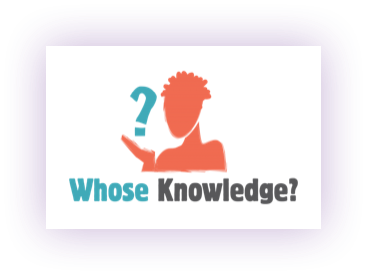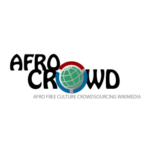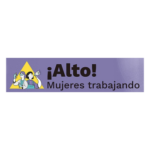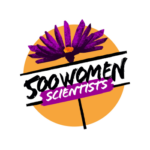Hope and healing: Creating feminist memory online
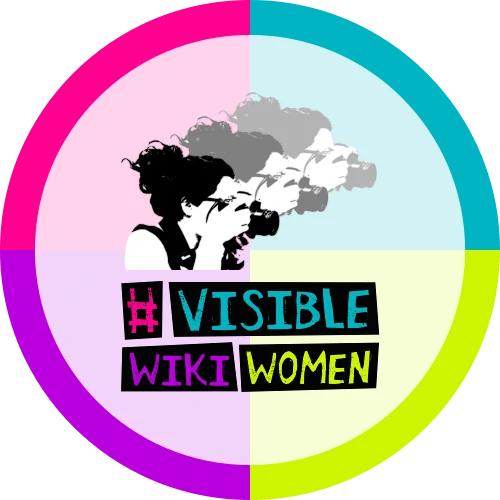
For the last four years, a collective of partners and friends from around the world made available thousands of images of women to Wikipedia and the broader internet. We are proud and grateful for what we’ve done so far, but also aware that there is so much more to be done. Wikipedia (and the broader internet) are still missing many images of important and influential women, especially black, brown, indigenous, trans women and non-binary individuals.
In the 5th year of #VisibleWikiWomen campaign, we and our partners invite you to occupy the digital space, creating, sharing, and uploading open-licensed images of marginalized women and non-binary folks to Wikimedia Commons. Let’s combat online invisibility by creating a shared and collective feminist memory that gives us hope and healing!
Welcome to the #VisibleWikiWomen campaign 2022! Join along all year for the fifth edition of the campaign.
The Issue
Women’s knowledge and contributions to the world are invisible in many ways. When we look at women’s invisibility online, Wikipedia is a good proxy to explain why this is such a critical issue. Less than ¼ of Wikipedia biographies represent women. Many biographies of notable women don’t exist or are incomplete.
More often than not, women biographies don’t have images. We estimate that less than 20% of Wikipedia articles of important women have pictures. Only 20% of the images that depict human beings on Wikimedia Commons represent women (according to https://humaniki.wmcloud.org).
When women’s faces are missing from Wikipedia, that invisibility spreads. Half a billion people read Wikipedia every month, and it is in the top 10 most visited websites in the world. In other words, gaps on Wikipedia have a big impact on the broader internet.
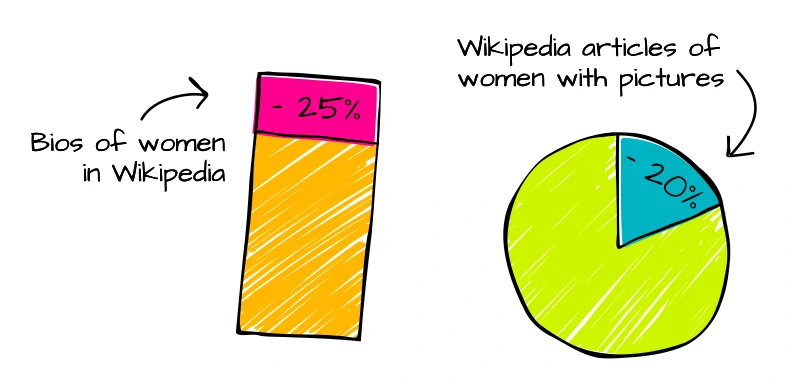
The theme of the year
The theme for this 2022 campaign is Hope and healing: Creating feminist memory online.
In 2022, we want to acknowledge that our communities are trying to work through the grief, anger and sadness of many different losses. In the last two editions of this campaign Feminist Realities: living our resistance and liberation (2021) and Infrastructures of resistance: women in the critical infrastructures of care (2020), we had to lean on our collective strength and resilience to continue this important work as we faced a global pandemic, climate crisis and raging racism and fascism.
For this year’s campaign, our communities of marginalized women/non-binary folks who are often at the core of genuine hope, care and healing work, remind us that we can still find hope and create reparative healing — of ourselves and the planet.
When we document our lives, legacies, and struggles, we are actively creating our collective memory and healing in community and solidarity. We are also impacting the kind of futures we want to create. The visual narratives we build today have the potential to change how we experience and are portrayed on the internet, the media, the cultural and memory preservation institutions and, of course, Wikipedia.
In a world where the algorithms of big tech corporations decide who is visible (and who remains invisible), solely based on commercial criteria, open knowledge platforms like Wikipedia, despite its own challenges, can still be spaces for collaborative co-creation of community knowledge and memory.
We literally need to see each other in these spaces in an affirming, celebratory way as a source of collective power for our work toward social change, to transform a capitalist, patriarchal and racist world.
Our goal for 2022
Our goal for this fifth edition of #VisibleWikiWomen is to bring 5000 images of notable women and non-binary individuals to Wikimedia Commons, the big multimedia library for all Wikimedia projects, including the 317 language versions of Wikipedia.
Once again we will be focusing on increasing the number of images of influential black, brown and indigenous women that are being uploaded to Wikipedia as part of the #VisibleWikiWomen campaign.
To reach this goal, we invite you – women’s and feminist organizations, culture and memory institutions, Wikipedia editors, user groups, chapters, and anyone who would like to give notable women the visibility and acknowledgment they deserve. We are excited to collaborate with previous year’s friends, allies and co-conspirators again and to welcome new partners from around the world.

Key-moments of 2022
#VisibleWikiWomen is now a yearly campaign, but certain celebrations and commemorations of the year can work as special moments to engage. We want to highlight the following key moments for our communities throughout the year:
- February: Black History Month
- March: International Women’s Day #8M – the campaign launch!
- April: Dalit History Month
- May 1: Workers day, a moment to celebrate all women in their workplaces 🙂
- June: LGBTQIA Pride Month
- August 31: International Day for People of African Descent
- September 5: International Indigenous Women’s Day
- September 28: International Safe Abortion Day
- 25 November to 10 December: 16 Days of Activism against Gender-Based Violence
- And more…
Find our #VisibleWikiWomen events for the year here.
How to participate
You can join the #VisibleWikiWomen campaign all year long, by gathering and uploading quality images in the public domain, or under free license, to Wikimedia Commons under the VisibleWikiWomen category. These images can be photographs or drawings of women, as well as images of their work, with proper consent.
Besides uploading images to Commons, you can also participate in the campaign by:
- Hosting or attending local events in your communities where photos can be taken or uploaded
- Releasing your existing photos of women under free licence
- Creating illustrations and drawings
- Promoting and publicizing this project by spreading the word about it and using the hashtags #VisibleWikiWomen and #WomenofColors on Facebook, Twitter, and Instagram.
- Co-organizing and hosting an online event with Whose Knowledge? to bring the campaign to your local communities
And probably so much more! We’d love to see you come up with new ideas that make sense for you and your communities.
If you need extra support for participating in the campaign, please email us at visiblewikiwomen[at]whoseknowledge[dot]org.
How to get involved?
Here are some additional ways to support the #VisibleWikiWomen campaign:
Content

‣ Help make our campaign multi-lingual by translating our Meta page, resources kit and the campaign pages of our website into different languages.
‣ Make lists of Wikipedia women biographies without images (by country, by occupation, by century, by activity) to raise awareness of the gender visual gap and create interesting challenges for participants.
‣ Write a new Wikipedia article inspired by an “orphan” women portrait (an image without an article) and use that image to illustrate it.
Spread the word

‣ Curate and share: select images you love, and optionally mix them with inspiring texts and art, and just share it with the hashtags #VisibleWikiWomen and/or #WomenofColors.
‣ Collaborative covering: if you are a journalist, a blogger, a podcaster, or you just like to spread ideas online, you can create a piece of content about the campaign.
‣ Find all you need to know for sharing the campaign in our Social Media Toolkit (PDF).
Support the campaign

‣ If you are a feminist organization, cultural and memory institution, media or other potential partner organization, become an institutional partner
‣ If you are an individual connected to potential partners (like the ones mentioned above), please introduce them to the campaign!
If you are connected with potential funders who may be able to fund and support this campaign, please bring them to the campaign!
‣ If you want to volunteer to support this year’s campaign, drop us a line at visiblewikiwomen[at]whoseknowledge[dot]org. There’s always room to welcome new allies!
‣ If you would like to financially support this year’s campaign, click here:
What we’ve done so far
In 2018, we launched the VisibleWikiWomen pilot edition, followed by other three successful campaigns in 2019, 2020, and 2021. Highlights from our last year’s campaign include:
- Our partners and communities brought over 1700 images to Wikimedia Commons, illustrating pages in 38 different Wikipedia languages. While we celebrate each and every one of these images, this campaign was not about the breadth and quantity of images. It was about the depth and quality of our engagements with our partners and communities, as well as our focus on creating local capacity in the Global South communities we primarily serve.
- We hired our first Africa-based coordinator, Pamela Ofori-Boateng, to support our existing partners and establish new partnerships in the continent, as well as to co-coordinate the campaign with our long-term coordinator Mariana Fossatti. Besides being a well-known Wikipedian in Ghana, Pamela had been a very dedicated campaign partner in previous editions of #VisibleWikiWomen.
- We supported collective learning experiences by leading and co-leading workshops on how to upload images to Wikimedia Commons. We co-hosted two online workshops with our partners Association for Women’s Right and Development (AWID) and World Pulse, both international feminist networks, and facilitated a workshop series in the Greater Manchester Narratives Lab, a culture hack and knowledge justice process.
- We experimented with directly supporting local organizers that could amplify and lead their campaign activities locally. This is an idea and goal we’ve had since the conception of #VisibleWikiWomen. We’ve always planned on creating more local capacity and supporting our communities to lead and shape this campaign according to their own needs. In order to do that, during this edition we offered financial and technical resources, in addition to the knowledge resources we’ve offered in the past, to local #VisibleWikiWomen organizers. As a result, our local organizers hosted six national-level #VisibleWikiWomen events online: four in Africa (Ghana, Kenya, Rwanda and Tanzania), and two in Latin America (Argentina and Uruguay).
- This campaign’s edition brought over 40 new editors to the Wikimedia community, our highest number thus far, and we expect more will continue joining as our partners and campaign participants now have the skills and excitement to share what they learned with their communities. For more stories and direct quotes from campaign participants this year, read our last #VisibleWikiWomen 2021 blog post.
Our partners & friends
Our partners throughout the campaign include:
- Women in Red
- Art + Feminism #NowEditingAF
- Association CLibre #CLibreTn
- Global Fund for Women
- Mujeres latinoamericanas en Wikimedia
- O Foundation
- Open Foundation West Africa #OFWAFRICA
- The Black Lunch Table #blacklunchtable
- WikiDonne (#WikiDonne)
- Wikimedia Argentina
- Wikimedia Bolivia
- Wikimedia Community User Group Brazil
- Wikimedia Israel #WikimediaIL
- Wikimedia Tunisie #WikimediaTN
- Wikimedia Uruguay
- Wikimujeres
- Women in Red #WikiWomenInRed
- Women in Red
- Amical Wikimedia
- Art + Feminism #NowEditingAF
- Association CLibre #CLibreTn
- Association for Women’s Rights in Development (AWID)
- Biblioteca Daniel Cosío Villegas (Mexico)
- Women and Memory Forum
- Global Fund for Women
- Global Voices
- International Association of Women’s Museums
- Mujeres latinoamericanas en Wikimedia
- O Foundation
- Open Foundation West Africa #OFWAFRICA
- Smithsonian National Portrait Gallery
- Syrian Female Journalist Network
- Techqueira
- The Black Lunch Table #blacklunchtable
- WikiDonne (#WikiDonne)
- Wikimedia Argentina
- Wikimedia Bolivia
- Wikimedia Community User Group Brazil
- Wikimedia DC
- Wikimedia Israel #WikimediaIL
- Wikimedia Nigeria
- Wikimedia Tunisie #WikimediaTN
- Wikimedia Uruguay
- Wikimujeres
- Women in Red #WikiWomenInRed
- Africa is a Country
- African Women’s Development and Communication Network (Kenya)
- Women in Red
- Amical Wikimedia
- Association for Progressive Communications
- Art + Feminism #NowEditingAF
- Association CLibre #CLibreTn
- Association for Women’s Rights in Development (AWID)
- Barbados Museum & Historical Society
- Biblioteca Daniel Cosío Villegas (Mexico)
- Development Alternatives with Women for a New Era
- Ennegreciendo Wikipedia
- Global Fund for Women
- Global Voices
- Gobierno de Entre Ríos (Argentina)
- International Association of Women’s Museums
- International Image Interoperability Framework Consortium
- International Women’s Day Wikipedia Edit-a-Thon 2020
- Mujeres latinoamericanas en Wikimedia
- O Foundation
- Periodicas
- Smithsonian National Portrait Gallery
- Syrian Female Journalist Network
- Techqueira
- The Black Lunch Table #blacklunchtable
- WikiDonne (#WikiDonne)
- Wikimedia Argentina
- Wikimedia Bolivia
- Wikimedia Community User Group Brazil
- Wikimedia DC
- Wikimedia Israel #WikimediaIL
- Wikimedia Nigeria
- Wikimedia Tunisie #WikimediaTN
- Wikimedia UK
- Wikimedia Uruguay
- Wikimujeres
- Women in Red #WikiWomenInRed
- World Pulse #SheTransformsTech
- Association for Women’s Rights in Development (AWID)
- Lankelly Chase
- Wikimedia Argentina
- Wikimedia Uruguay
- Women in Red #WikiWomenInRed
- World Pulse #SheTransformsTech
- African Women’s Development and Communication Network (Kenya)
- AfroCROWD
- Art + Feminism #NowEditingAF
- Association for Progressive Communications
- Association for Women’s Rights in Development (AWID)
- The Black Lunch Table #blacklunchtable
- Alto Mujeres Trabajando
- Flickr Foundation
- Mozilla Foundation
- Take Back the Tech
- Wikimedia Community User Group Brazil
- Wikimedia Argentina
- Wikimedia Uruguay
- Women in Red #WikiWomenInRed
- World Pulse #SheTransformsTech
- 500 Women Scientists
Resources
If you have never uploaded images to Wikipedia or Wikimedia Commons before, don’t worry, we have you covered! We created this #VisibleWikiWomen resource kit, where you will find instructions and practical advice on how to navigate the Wikiverse, especially how to use Wikimedia Commons.
The resource, How to upload images to make women visible on Wikipedia and the internet, is particularly useful as it will guide you through the process of uploading images for this campaign.
Other related resources to help you are:
- Getting and giving consent for images on Wikipedia
- How to find images on the internet to illustrate Wikipedia
- Dos and Dont’s for adding images to Wikimedia Commons and Wikipedia
- How to create drawing for Wikipedia
- How to ask for image donations
- How to join VisibleWikiWomen as a campaign organizer in your local context
- Have a photographer present at edit-a-thons to photograph notable women with consent
- Guide for Cultural and Memory Institutions to make women more visible on Wikipedia
…and if you need inspiration, here are some lists of articles that are missing images of women on Wikipedia.
